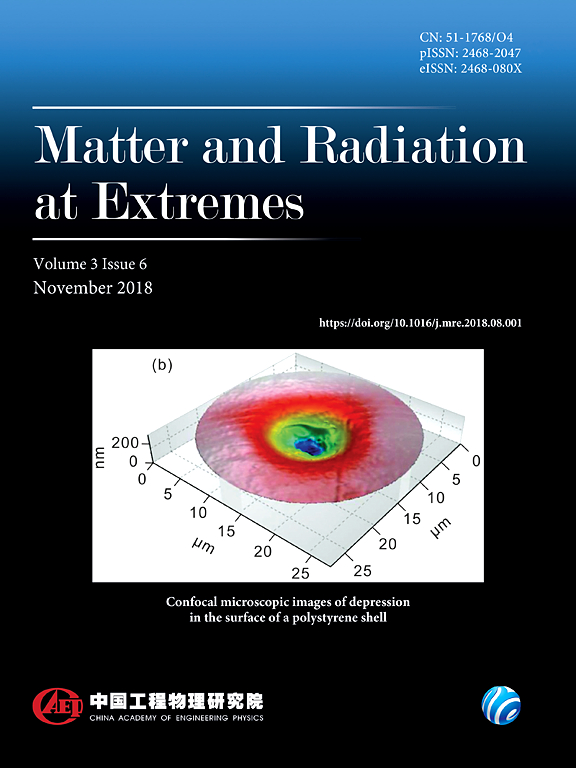A distinctive HPHT platform with different types of large-volume press subsystems at SECUF
IF 4.7
1区 物理与天体物理
Q1 PHYSICS, MULTIDISCIPLINARY
引用次数: 0
Abstract
Large-volume presses (LVPs) providing large volumes, liquid media, deformation capability, jump compression, and in situ measurements are in great demand for high-pressure research, particularly in the fields of geoscience, condensed matter physics, material science, chemistry, and biology. A high-pressure and high-temperature (HPHT) platform with different LVP subsystems, both solid-state and liquid environments, and nonequilibrium subsystems, has been constructed at the Synergetic Extreme Condition User Facility, Jilin University. This article describes the construction of the different subsystems and provides an overview of the capabilities and characteristics of the different HPHT subsystems. A large sample volume (1000 mm3) at 20 GPa is achieved through the use of a belt-type apparatus in the solid-state subsystem. HPHT conditions (1.8 GPa and 1000 K) are realized in the liquid subsystem through the use of a piston–cylinder-type LVP with optical diamond windows for in situ spectroscopic measurements. A maximum pressure jump to 10.2 GPa can be reached within 20 ms in the nonequilibrium subsystem with the use of an improved bladder-pressurization jump press. Some typical results obtained with different LVPs are briefly reviewed to illustrate the applications and advantages of these presses. In summary, the platform described here has the potential to contribute greatly to high-pressure research and to innovations in high-pressure technology.SECUF 配备不同类型大容量压机子系统的独特高压热处理平台
高压研究领域,尤其是地球科学、凝聚态物理、材料科学、化学和生物学领域,对具有大容量、液体介质、变形能力、跃迁压缩和原位测量功能的大容量压机(LVP)的需求量非常大。吉林大学的 "协同极端条件用户设施"(Synergetic Extreme Condition User Facility)构建了一个高压高温(HPHT)平台,其中包括不同的低压差子系统、固态和液态环境以及非平衡子系统。本文介绍了不同子系统的建造情况,并概述了不同高温高压子系统的能力和特点。通过在固态子系统中使用皮带式仪器,可在 20 GPa 条件下实现大样品体积(1000 立方毫米)。在液体子系统中,通过使用带有光学金刚石窗口的活塞气缸式 LVP 进行原位光谱测量,实现了 HPHT 条件(1.8 GPa 和 1000 K)。在非平衡子系统中,通过使用改进的囊式加压跃迁压力机,可在 20 毫秒内将最大压力跃迁至 10.2 GPa。本文简要回顾了使用不同 LVP 取得的一些典型结果,以说明这些压力机的应用和优势。总之,这里介绍的平台有可能为高压研究和高压技术创新做出巨大贡献。
本文章由计算机程序翻译,如有差异,请以英文原文为准。
求助全文
约1分钟内获得全文
求助全文
来源期刊

Matter and Radiation at Extremes
Physics and Astronomy-Atomic and Molecular Physics, and Optics
CiteScore
8.60
自引率
9.80%
发文量
160
审稿时长
15 weeks
期刊介绍:
Matter and Radiation at Extremes (MRE), is committed to the publication of original and impactful research and review papers that address extreme states of matter and radiation, and the associated science and technology that are employed to produce and diagnose these conditions in the laboratory. Drivers, targets and diagnostics are included along with related numerical simulation and computational methods. It aims to provide a peer-reviewed platform for the international physics community and promote worldwide dissemination of the latest and impactful research in related fields.
 求助内容:
求助内容: 应助结果提醒方式:
应助结果提醒方式:


